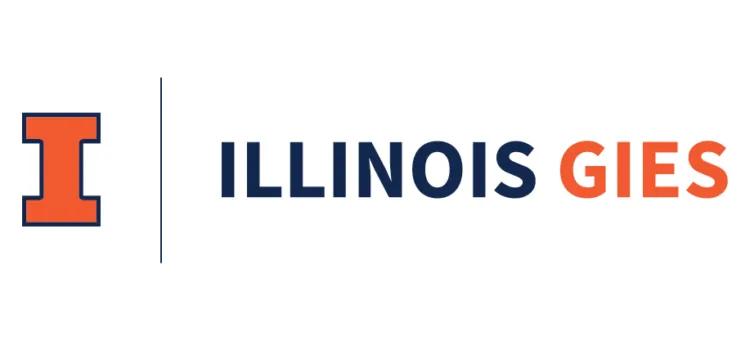
New research by The College Board says that the cost of college tuition is actually getting cheaper, compared to a decade ago.
The new report, Trends in College Pricing, takes data through 2017-18 from the College Board’s Annual Survey of Colleges and reports findings such as published tuition prices, variation in published prices, net price, inflation adjustments, and more.
The report found three main findings, as originally reported by Forbes. The actual price students pay for nonprofit private four-year colleges is down nearly 5% in the past decade, the research says. For public, two-year colleges, actual price paid is down 5% since 2008. At public, four-year colleges, however, the actual price paid has grown nearly 35% in the past decade. Forbes notes that a majority of this surge took place from 2011 to 2012, which accounts for nearly half the total growth.
STICKER PRICE VERSUS ACTUAL PRICE
One important distinction in college cost is the sticker price versus the actual net price, after scholarships, grants, and loans.
“Many students at both public and private colleges don’t pay sticker price,” Jon Tarrant, a certified educational planner, tells Poets & Quants for Undergrads. “Some receive substantial need-based aid, especially at highly selective colleges, that claim to be need blind and meet 100% of demonstrated need. Other schools offer substantial merit aid or tuition discounts even to students who are not particularly meritorious.”
Tarrant says merit scholarships or tuition discounts are upwards of 50% of tuition. In 2017-18, full-time students at public two-year colleges received an average of about $3,900 in grant aid and federal education tax credits and deductions, according to The College Board. On average after grant aid, students must cover about $8,070 in living expenses.
THE REALITY BEHIND THE STICKER PRICE
Scholarships and grants lower the price of a college education for students, but that doesn’t that doesn’t necessarily mean students are saving a whole lot of money.
Paul Wrubel, a Stanford University Ph.D. and a recognized expert in college financial aid and college funding issues, tells PQU that there are a number of other factors that affect the cost of college and make sticker price “largely irrelevant.” For one, according to The New York Times, only 19% of full-time students at most public universities earn a bachelor’s degree in four years. At private schools, the rate is slightly better, but not totally encouraging. According to a 2015 report from the Student Clearinghouse Research Center, only about 53% of students that enrolled in private and public universities graduated after six years. Wrubel says this results in billions of dollars lost in actual and “opportunity” costs.
“This reality overrides any claim that the cost of colleges has trended down over the last decade,” he says. “Add to this the further reality that many colleges, stressed by financial issues, knowingly admit students who are likely to fail, but who will pay while failing often using student loans. In this way the college gets some risk-free money while the failed student has to grapple with significant debt that affects his credit and a host of other things. It is higher education’s version of a sub-prime mortgage.”
In addition, Wrubel says, financial aid such as the Pell Grant has failed to keep up with inflation over the years.
“Not only has the value of the Pell Grant to low income students not kept up with inflation but in the early days, a Pell Grant was sufficient to pay the lion’s share of most public college tuition bills,” Wrubel continues. “Since 1972, the Pell Grant and other forms of grant aid have not kept pace with inflationary college costs so as a practical matter regardless of how you cut it, college is more expensive to most consumers.”
WHAT’S WITH THE FOUR-YEAR PUBLIC UNIVERSITIES?
The main reason behind why public four-year costs have gone up over the years is because of the 2008 recession. The average state spent 16% less per student in 2017 than it did in 2008, according to the Center on Budget and Policy August 2017 report.
“They [public schools] were forced to raise tuition and fees following the 2008-09 recession when states drastically cut aid to education,” Jeff Levy, a certified education planner and founder of Personal College Admissions, tells PQU.
While private school costs may be going down, Levy says a majority of undergraduate students in the U.S. attend public colleges and universities (roughly 78%).
“It is in this sector [public] where net price has risen most sharply, driving up the number of borrowers and the average student loan debt,” Levy says. “As the cost of college rises and family income remains flat, borrowing will necessarily increase.”
Increased costs at public schools has had a number of impacts in addition to loan debt. For one, as the costs of a degree increase, so does the pressure of making sure that degree pays off. “Many families look closely at maximizing their return on investment, and this certainly affects the majors that many high school students are considering,” Levy says.
As a result, certain majors, such as engineering, computer science, business, and pre-med, have seen significant increases in student demand. But, Levy says, there’s concern in that too.
“The problem is that several of these require six years or more of postsecondary education,” he says. “Trying to predict trends in sector pay scales this many years out is fairly impossible to do. The best advice is still that students should study what they love as undergraduates, not what they think will earn them a big paycheck.”
DON’T BE FOOLED BY THE COST OF PRIVATE, NONPROFIT SCHOOLS
Actual costs at private four-year institutions have decreased nearly 5% over the past decade, according The College Board. However, according to Brian Taylor, managing director of Ivy Coach, an elite college consulting firm, not all private four-year institutions are the same.
“There are many private, nonprofit, four-year colleges in the United States,” he says. “Most are not highly selective. In fact, most aren’t particularly good at all.”
At the end of the day, colleges are businesses. If they have to lower tuition costs to attract students and more business, Taylor says, they will. The only exception? Elite, prestigious universities.
“At our nation’s most elite universities, tuition continues to rise — typically at a rate higher than inflation,” Taylor says. “And these schools have every right to keep inflating tuition. The demand to attend America’s most elite universities continues to rise so why wouldn’t these schools raise tuition? It is Business 101.”
WHAT WILL FUTURE COLLEGE COSTS LOOK LIKE?
The U.S. college education is the most expensive degree in the world. While the U.S. has many top universities, it’s struggling to make the college degree accessible. Americans now fall behind countries, like Canada, Japan, and Israel, in terms of college educated adults, according to US News.
“As long as there is no consensus in this country around putting increased tax dollars towards higher education, U.S. colleges and universities will remain among the most expensive in the world,” Levy says. “Without the financial support that most countries extend to higher education, U.S. institutions will become increasingly unaffordable and leave greater numbers of high school students behind.”
DON’T MISS: STERN UPS AID FOR LOW-INCOME STUDENTS or HOW, & WHERE, AID WILL SLASH YOUR B-SCHOOL BILLS










